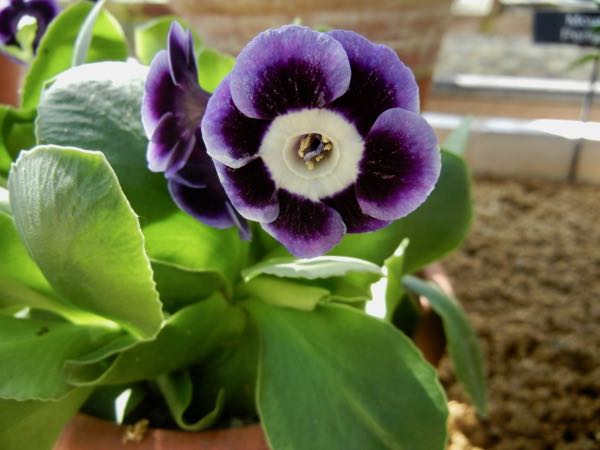Primula auricula ‘Blue Yodeler’: A Charming Alpine Perennial
Primula auricula ‘Blue Yodeler’, commonly known as Primrose ‘Blue Yodeler’ or Auricula Primrose ‘Blue Yodeler’, is a delightful evergreen perennial that adds a touch of beauty to gardens or in a container. Native to Europe, particularly the Alps, this Primula belongs to the Primulaceae family.
Foliage and Flowers
The distinctive light green leaves of Primula auricula ‘Blue Yodeler’ form a compact rosette, creating an attractive base for the plant. Rising above the rosette, slender stems reach a height of approximately 20cm (8 inches). In mid to late spring, clusters of enchanting flowers emerge, adding a burst of color to the garden. The velvety blue petals, delicately white at the base, encircle a vibrant yellow center. These lovely flowers are not only visually appealing but also emit a light and pleasant fragrance, further enhancing their allure.
Cultivation Guidelines
1. Light and Location: Primula auricula ‘Blue Yodeler’ thrives in partial shade, making it an excellent choice for gardens with dappled sunlight or areas that receive a few hours of direct sunlight each day. Protecting the plant from intense midday sun helps prevent leaf scorch.
2. Soil Requirements: Plant this Primula in moist, fertile soil that is well-drained. While it tolerates various soil types, including alkaline, acid, and neutral, providing a well-draining medium is crucial for its overall health and vigor.
3. Watering: Primula auricula ‘Blue Yodeler’ appreciates consistent moisture, so regular watering is necessary to keep the soil evenly moist. However, take care not to overwater, as excessive moisture can lead to root rot. It’s a good practice to water at the base of the plant to prevent wetting the foliage, as this can increase the risk of fungal diseases.
4. Pest and Disease Management: Keep a watchful eye for common pests that may affect Primula auricula ‘Blue Yodeler’, such as aphids, leafhoppers, vine weevils, slugs, and mites. Regular inspections and appropriate control measures, such as manual removal or using organic pest control methods, can help maintain a healthy plant. Additionally, be cautious of gray mold (Botrytis), a fungal disease that can affect Primulas. To minimize the risk, provide good air circulation, avoid overwatering, and promptly remove any infected plant material.
5. Deadheading and Maintenance: Deadheading, or removing faded flowers, not only enhances the plant’s appearance but also encourages continued blooming. Additionally, promptly remove any damaged or diseased leaves to prevent the spread of pathogens and maintain the plant’s vitality.
6. Hardy Nature: Primula auricula ‘Blue Yodeler’ exhibits hardiness, allowing it to withstand colder temperatures. However, it is essential to provide protection in severe winters or regions with harsh conditions. Mulching around the base of the plant can help insulate the roots and prevent frost damage.
With its charming rosette of light green foliage and clusters of fragrant, velvety blue flowers, Primula auricula ‘Blue Yodeler’ brings a touch of alpine beauty to any garden. Whether planted in rock gardens, borders, or containers, this perennial adds a vibrant and cheerful element to the landscape. By following these cultivation guidelines and providing suitable growing conditions, you can enjoy the delicate charm of Primula auricula ‘Blue Yodeler’ year after year.




